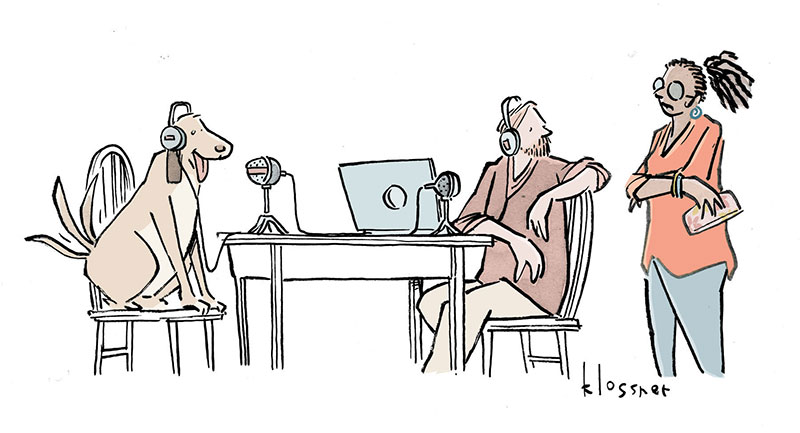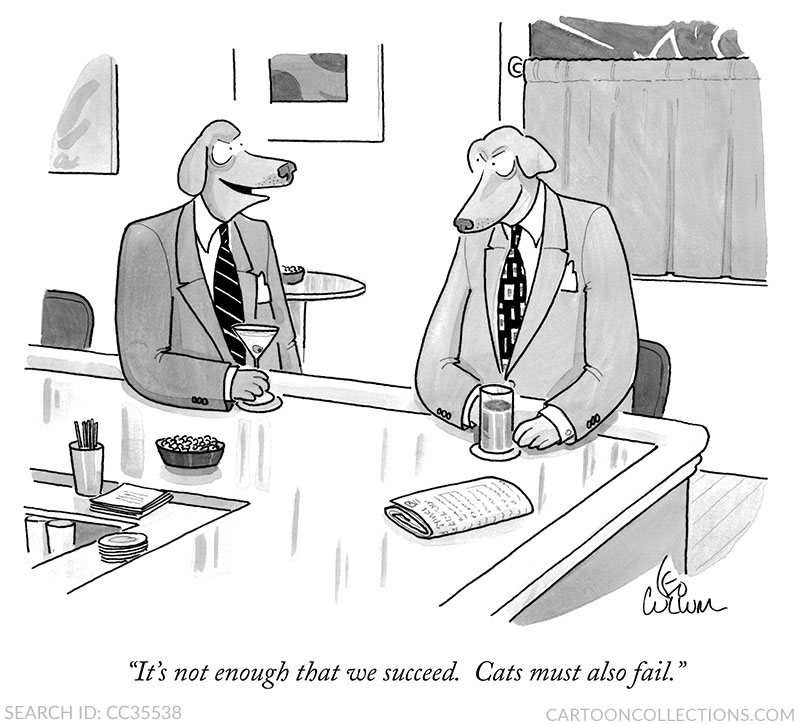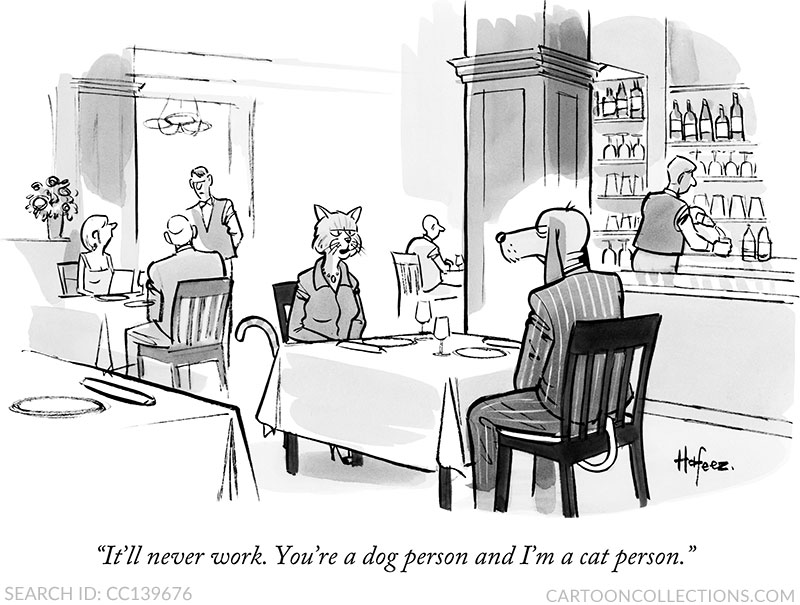 In John Klossner’s cartoon, a casually dressed radio host with a beard is interviewing a dog who’s sitting on a chair in front of a microphone and wagging its tail. Both the dog and the interviewer are wearing headphones. The host has turned in his chair to listen to his producer, a woman whose arms are crossed. She’s delivering the line that will serve as the caption.
In John Klossner’s cartoon, a casually dressed radio host with a beard is interviewing a dog who’s sitting on a chair in front of a microphone and wagging its tail. Both the dog and the interviewer are wearing headphones. The host has turned in his chair to listen to his producer, a woman whose arms are crossed. She’s delivering the line that will serve as the caption.
The dog’s heavy breathing might offend some people, so I first thought of this caption: “The panting is not playing well with our female listeners.”
Because the host’s job is to conduct an interview, I alluded to the most common question directed to dogs:
- “Try to find out why he’s a good boy.”
- “The question is not whether he’s a good boy, but why.”
- “You’ve already established he’s a good boy. Move on.”
- “Stop asking who the good boy is.”
Finally, I focused on the host’s relationship with the dog, which would explain both why the dog is being interviewed and why the producer looks annoyed: “I don’t care if he is your best friend.”
Now let’s see how you did.
There were several variations on the “good boy” caption. These were the best:
- “Are you only going to ask him, ‘Who’s a good boy?’”
- “He may be a good boy, but he’s a terrible podcast guest.”
- “People want to hear about bad boys.”
Here’s the best reference to the dog’s heavy breathing: “We’re getting complaints about the panting.”
The next four entries all have the producer suggesting interview questions:
- “Just ask him where he buried my car keys.”
- “Ask him where he hid my slipper.”
- “Ask him why he pees on the rug.”
- “You’re going to have to ask him about the ass-sniffing.”
That last entry may be too vulgar for The New Yorker, but this isn’t The New Yorker. It’s a website that works with New Yorker cartoonists. More important, the entry deserves special attention because producers do sometimes have to push their interviewers to ask guests uncomfortable questions.
Many of The New Yorker’s classic dog cartoons focus on that species’ antagonistic relationship with cats:
 A couple of you relied on that same trope:
A couple of you relied on that same trope:
- “First you need to give a trigger warning for cats.”
- “The cat wants equal time.”
I love single-word entries, and this one does a nice job of connecting to the cartoon’s setting a common command for dogs: “Speak.” That entry is notable also for being the only one that has the producer addressing the dog directly.
The next entry assumes the dog can speak but doesn’t say anything interesting: “It’s just that every story ends with a stick or a cat.”
The following entries acknowledge that a dog would not be a successful interview subject for a radio program:
- “I don’t get it; he was huge on YouTube.”
- “You know who isn’t happy? Our advertisers.”
I like the way that last caption incorporates a reference to the dog’s wagging tail.
This entry explains why a radio show would choose to interview a dog: “Apparently, he appeals to every demographic.”
And this final caption explains why the producer looks so annoyed: “Your next guest just peed on the carpet.”
For the fourth week in a row now, we have had to caption really interesting but challenging cartoons. (Remember Dave Borchart’s shadow drawing, Drew Panckeri’s five snowmen, and P.C. Vey’s fish line-up?) Again, however, you met the challenge, and I think this week’s best entry is, “The cat wants equal time.”


